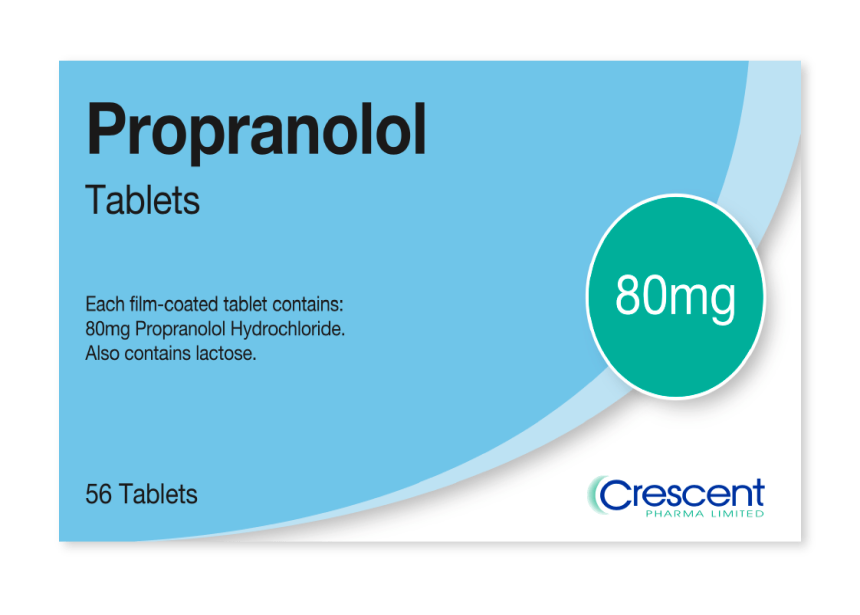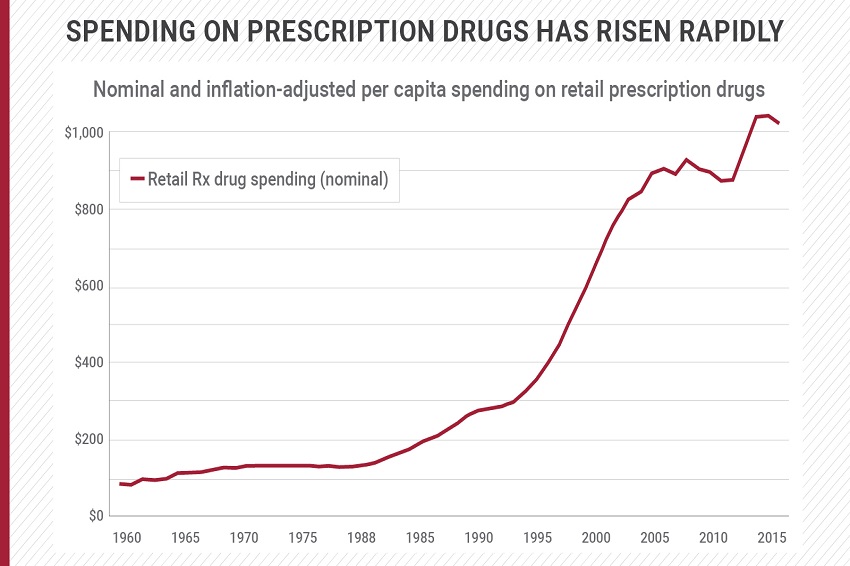
Table of contents
- What is Propranolol?
- Propranolol Indications
- Propranolol Side Effects
- How to Use Propranolol
- Side Effects and Precautions
- Monitoring and Follow-up
- How to Buy Propranolol in the USA
- Consulting a Healthcare Provider
- Obtaining a Prescription
- Choosing a Pharmacy
- Using Insurance
- Paying Out of Pocket
- Refilling Your Prescription
- Legal and Safety Considerations
- Prices of Propranolol in the USA
- Factors Influencing the Price of Propranolol
- Dosage and Form
- Pharmacy Choice
- Insurance Coverage
- Discount Programs
- Price Range
- Saving on Propranolol
- Propranolol Dosages and Their Differences
- Available Dosages
- Immediate-Release Tablets
- Extended-Release Capsules
- Oral Solution
- Choosing the Right Dosage
- Adjusting Dosages
- Splitting Tablets
- Individualized Treatment
- Understanding Propranolol
- Medical History
- Current Medications
- Blood Pressure and Heart Rate
- Side Effects and Tolerability
- Lifestyle Considerations
- Long-Term Management
- Propranolol in World
What is Propranolol?
Propranolol is a medication that belongs to a class of drugs known as beta-blockers. It is primarily used to treat a variety of cardiovascular conditions, including high blood pressure (hypertension), angina (chest pain), and irregular heartbeats (arrhythmias). By blocking beta-adrenergic receptors in the heart, propranolol reduces the effects of adrenaline and lowers heart rate, blood pressure, and strain on the heart.
Beyond its cardiovascular uses, propranolol is also effective in treating certain types of tremors and preventing migraine headaches. For individuals suffering from essential tremor, propranolol helps to stabilize nerve activity, reducing involuntary shaking. In migraine prevention, the drug is thought to work by decreasing the dilation of blood vessels in the brain, thus reducing the frequency and severity of migraine attacks.
Propranolol is sometimes prescribed for managing anxiety, particularly performance anxiety. Its ability to block the physical symptoms of anxiety, such as rapid heartbeat and sweating, makes it a popular choice for individuals needing to perform in high-stress situations, such as public speaking or performing arts. This off-label use leverages the calming effects of propranolol without sedating the user.
Available in various forms, including tablets, extended-release capsules, and injectable solutions, propranolol offers flexibility in administration. The dosage and form depend on the specific condition being treated and the patient's response to the medication. As with any medication, propranolol should be taken under the guidance of a healthcare professional, with regular monitoring to ensure its effectiveness and to manage any potential side effects, which can include fatigue, dizziness, and, in some cases, more severe cardiovascular effects.
Propranolol Indications
Propranolol is a versatile medication indicated for the treatment of various cardiovascular and non-cardiovascular conditions. As a beta-blocker, it works by blocking the action of certain natural chemicals in the body, such as epinephrine, on the heart and blood vessels. This action helps to reduce heart rate, blood pressure, and strain on the heart.
One of the primary indications for propranolol is the management of hypertension, or high blood pressure. By reducing the heart rate and the force of heart contractions, propranolol lowers blood pressure, which helps to prevent strokes, heart attacks, and kidney problems. It is often used alone or in combination with other antihypertensive agents to achieve optimal blood pressure control.
Propranolol is also indicated for the treatment of angina pectoris, a condition characterized by chest pain due to reduced blood flow to the heart muscle. By decreasing the workload of the heart and its oxygen demand, propranolol helps to alleviate chest pain and improve exercise tolerance in individuals with angina. Additionally, it is used to manage certain types of arrhythmias, or irregular heartbeats, by stabilizing the heart's rhythm and improving overall heart function.
Beyond its cardiovascular applications, propranolol is effective in preventing migraines and treating essential tremor. For migraine prevention, propranolol is taken regularly to reduce the frequency and severity of migraine attacks. In the case of essential tremor, a neurological disorder that causes involuntary shaking, propranolol helps to reduce tremors, thereby improving the quality of life for affected individuals. Furthermore, propranolol is sometimes prescribed off-label for managing anxiety, particularly performance anxiety, due to its ability to mitigate physical symptoms of anxiety such as rapid heartbeat and trembling.
Propranolol Side Effects
Propranolol, like any medication, can cause side effects. It is important to be aware of these potential adverse reactions to ensure safe usage and to know when to seek medical advice. The side effects of propranolol can be categorized into common, less common, and serious side effects.
Common Side Effects
- Fatigue
- Dizziness or lightheadedness
- Nausea
- Cold hands and feet
- Slow heart rate
- Digestive issues, such as diarrhea or constipation
These common side effects are usually mild and tend to diminish as the body adjusts to the medication. If these symptoms persist or cause significant discomfort, it is advisable to consult a healthcare professional.
Less Common Side Effects
- Shortness of breath
- Sleep disturbances, such as insomnia or vivid dreams
- Decreased libido or sexual dysfunction
- Depression or mood changes
- Swelling of the hands or feet
- Unexplained weight gain
Less common side effects may require medical attention if they occur. Patients experiencing these symptoms should seek guidance from their doctor to ensure the medication is not causing more serious health issues.
Serious Side Effects
- Severe allergic reactions (rash, itching, swelling of the face, lips, or throat)
- Severe dizziness or fainting
- Wheezing or trouble breathing
- Very slow heartbeat
- Blue fingers or toes
- Unusual bleeding or bruising
Serious side effects are rare but require immediate medical attention. If any of these symptoms are experienced, it is crucial to stop taking propranolol and seek emergency medical help.
It is essential to inform the healthcare provider of any existing medical conditions or medications being taken to avoid potential interactions and complications. Regular monitoring and follow-ups with the healthcare provider can help manage and mitigate side effects, ensuring the safe and effective use of propranolol.
How to Use Propranolol
Propranolol is a beta-blocker used to treat a variety of conditions such as hypertension, angina, and anxiety. It is essential to follow your doctor's prescription accurately when using propranolol. The dosage varies based on the condition being treated, your response to the medication, and your overall health. Commonly, propranolol is taken orally in tablet form, but it can also be administered as an extended-release capsule.
General Guidelines
- Take propranolol at the same time each day to maintain an even level in your bloodstream.
- If you are prescribed the extended-release form, swallow the capsule whole without crushing or chewing it.
- Consistently monitor your blood pressure and heart rate while on propranolol.
- Avoid abrupt discontinuation of the medication without consulting your doctor, as it can worsen your condition.
Side Effects and Precautions
Propranolol may cause side effects ranging from mild to severe. Common side effects include fatigue, dizziness, and gastrointestinal issues such as nausea or diarrhea. More severe side effects, though rare, can include shortness of breath, swelling of the ankles or feet, and significant weight gain. Seek immediate medical attention if you experience any severe reactions.
Precautions
- Inform your doctor of your full medical history, especially if you have asthma, chronic bronchitis, or other respiratory conditions.
- Pregnant or breastfeeding women should discuss the risks and benefits with their healthcare provider.
- Propranolol can interact with other medications, so ensure your doctor is aware of all drugs and supplements you are taking.
- Avoid alcohol while taking propranolol, as it can increase drowsiness and dizziness.
Monitoring and Follow-up
Regular monitoring and follow-up appointments are crucial when using propranolol. Your doctor may adjust your dosage based on your response to the medication and any side effects you experience. Blood tests and other diagnostic evaluations may be required to assess your heart function and ensure the medication is working effectively.
Self-Monitoring Tips
- Keep a daily log of your blood pressure and heart rate.
- Note any side effects or unusual symptoms and report them to your doctor promptly.
- Maintain a healthy lifestyle, including a balanced diet and regular exercise, to enhance the effectiveness of propranolol.
How to Buy Propranolol in the USA
Consulting a Healthcare Provider
Before purchasing propranolol, it's essential to consult with a healthcare provider. Propranolol is a prescription medication, meaning it cannot be legally obtained without a prescription from a licensed medical professional. During your consultation, discuss your medical history and symptoms to determine if propranolol is the appropriate medication for your condition.
Obtaining a Prescription
If your healthcare provider determines that propranolol is suitable for you, they will provide you with a prescription. This can be done during an in-person visit or through a telehealth appointment, depending on your provider's policies. Ensure that the prescription includes the correct dosage and instructions for use.
Choosing a Pharmacy
Once you have a prescription, you can choose a pharmacy to fill it. In the USA, there are several options:
- Local Pharmacies: These include chain pharmacies like CVS, Walgreens, and Rite Aid, as well as independent local pharmacies. You can take your prescription to the pharmacy in person or have your doctor send it electronically.
- Mail-Order Pharmacies: Many insurance plans offer mail-order pharmacy services, which can be convenient for long-term medications. Providers like Express Scripts and OptumRx allow you to receive your medication directly at your home.
- Online Pharmacies: There are legitimate online pharmacies where you can order propranolol, such as those accredited by the National Association of Boards of Pharmacy (NABP). Be cautious and ensure the pharmacy is reputable to avoid counterfeit medications.
Using Insurance
If you have health insurance, check whether propranolol is covered under your plan. Most insurance plans cover prescription medications, but the copayment or coinsurance amount may vary. Contact your insurance provider to confirm coverage and understand your out-of-pocket costs.
Paying Out of Pocket
If you do not have insurance or propranolol is not covered, you can still purchase the medication by paying out of pocket. Prices can vary between pharmacies, so it may be beneficial to compare costs. Discount programs like GoodRx can help you find lower prices and provide coupons to reduce the cost of your prescription.
Refilling Your Prescription
For ongoing treatment, you will need to refill your prescription. Most pharmacies offer automatic refill services or reminders to ensure you do not run out of your medication. Keep track of your medication supply and plan ahead to request refills before you run out.
Legal and Safety Considerations
When buying propranolol, ensure you are following all legal and safety guidelines:
- Only use pharmacies that require a valid prescription.
- Avoid purchasing medication from unverified sources or international websites that bypass prescription requirements.
- Check the packaging and expiration date when you receive your medication to ensure it is safe to use.
Prices of Propranolol in the USA
Factors Influencing the Price of Propranolol
The price of propranolol in the USA can vary significantly based on several factors. These include the dosage and form of the medication, the pharmacy you choose, whether you have insurance, and if you use discount programs. Understanding these factors can help you find the best price for your prescription.
Dosage and Form
Propranolol is available in various dosages and forms, including immediate-release tablets, extended-release capsules, and oral solutions. Generally, higher dosages and extended-release forms tend to be more expensive. For example, a 10 mg tablet might cost less than a 60 mg extended-release capsule.
Pharmacy Choice
The cost of propranolol can vary between different pharmacies. Chain pharmacies like CVS, Walgreens, and Rite Aid often have different pricing compared to independent local pharmacies. Additionally, online pharmacies might offer competitive prices, but it's crucial to ensure they are reputable and accredited.
Insurance Coverage
If you have health insurance, the cost of propranolol may be significantly reduced. Most insurance plans cover generic medications, including propranolol, but the copayment or coinsurance amount can vary. Check with your insurance provider to understand your coverage and out-of-pocket expenses. Without insurance, you will need to pay the full price of the medication.
Discount Programs
Several discount programs can help reduce the cost of propranolol. Websites like GoodRx offer coupons and price comparisons for different pharmacies. These discounts can be particularly useful if you are paying out of pocket. Additionally, some pharmacies have membership programs that provide discounts on prescriptions.
Price Range
The price of propranolol can range widely depending on the factors mentioned. On average:
- Immediate-release tablets: The cost for a 30-day supply of 10 mg tablets can range from $4 to $20 without insurance.
- Extended-release capsules: The price for a 30-day supply of 60 mg capsules typically ranges from $25 to $60 without insurance.
- Oral solution: The cost for a bottle can range from $20 to $50 depending on the concentration and quantity.
Saving on Propranolol
To save on propranolol, consider the following tips:
- Compare Prices: Use websites like GoodRx to compare prices across different pharmacies and find the best deal.
- Use Insurance: If you have insurance, check your coverage for propranolol and use in-network pharmacies to minimize costs.
- Seek Generics: Opt for the generic version of propranolol, which is significantly cheaper than the brand-name version (Inderal).
- Ask for Discounts: Inquire at your pharmacy about any available discounts or membership programs that can reduce the cost.
Propranolol Dosages and Their Differences
Available Dosages
Propranolol, a beta-blocker used to treat conditions such as hypertension, angina, and anxiety, comes in various dosages. The available dosages ensure that the medication can be tailored to individual needs. Commonly prescribed dosages include:
- 10 mg
- 20 mg
- 40 mg
- 60 mg
- 80 mg
- 120 mg
- 160 mg
Immediate-Release Tablets
Immediate-release tablets are designed to be taken multiple times a day to maintain consistent levels of propranolol in the bloodstream. These tablets are available in dosages ranging from 10 mg to 80 mg. They are typically prescribed for conditions that require regular dosing throughout the day, such as hypertension and anxiety.
Extended-Release Capsules
Extended-release capsules release propranolol slowly over time, allowing for once-daily dosing. These are available in higher dosages, including 60 mg, 80 mg, 120 mg, and 160 mg. Extended-release formulations are often used for managing chronic conditions that benefit from a stable, prolonged effect, such as angina and certain heart conditions.
Oral Solution
Propranolol is also available in an oral solution form, which can be useful for patients who have difficulty swallowing pills. The solution typically comes in a concentration of 20 mg/5 mL. This form allows for precise dosing adjustments and is often used in pediatric patients or those with specific dosing needs.
Choosing the Right Dosage
The appropriate dosage of propranolol depends on several factors, including the condition being treated, the patient's age, weight, and overall health. Here are some typical uses for different dosages:
- 10 mg to 40 mg: Lower dosages are often used for managing anxiety and for initial treatment of hypertension.
- 60 mg to 120 mg: Moderate dosages are commonly prescribed for angina, migraine prevention, and ongoing hypertension management.
- 160 mg and above: Higher dosages are usually reserved for severe cases of hypertension, certain types of arrhythmias, and complex cardiovascular conditions.
Adjusting Dosages
Dosage adjustments may be necessary based on the patient's response to the medication and any side effects experienced. It's important to follow the prescribing doctor's instructions and not to alter the dosage without medical advice. Regular monitoring by a healthcare provider ensures the dosage remains effective and safe.
Splitting Tablets
For patients who need a dosage that isn't readily available, doctors may recommend splitting tablets. However, not all tablets are designed to be split, and doing so can affect the medication's efficacy. Extended-release capsules should never be split or crushed, as this can interfere with the slow-release mechanism.
Individualized Treatment
Propranolol dosages are highly individualized. A healthcare provider will consider the specific medical condition, patient history, and other medications being taken to determine the best dosage. Regular follow-up appointments help to ensure the chosen dosage continues to meet the patient's needs effectively.
Understanding Propranolol
Propranolol is a beta-blocker commonly prescribed to treat various cardiovascular conditions, anxiety, and certain types of tremors. It works by blocking the action of certain natural chemicals in your body, such as epinephrine, on the heart and blood vessels. This effect reduces heart rate, blood pressure, and strain on the heart. Deciding whether to take propranolol involves considering several important factors to ensure it is the right choice for your health needs.
Medical History
Your medical history is crucial in determining if propranolol is suitable for you. Conditions such as asthma, chronic obstructive pulmonary disease (COPD), diabetes, certain heart conditions (like heart block or slow heart rate), liver disease, and thyroid disorders can affect how propranolol works in your body or increase the risk of side effects. A thorough discussion with your healthcare provider about your medical history is essential before starting propranolol.
Current Medications
It's important to consider all medications you are currently taking, including over-the-counter drugs, supplements, and herbal products. Propranolol can interact with a variety of medications, such as other blood pressure medications, antidepressants, anticoagulants, and anti-inflammatory drugs. These interactions can either diminish the effectiveness of propranolol or increase the risk of adverse effects. Your healthcare provider needs a complete list of your current medications to avoid potentially harmful interactions.
Blood Pressure and Heart Rate
Monitoring your blood pressure and heart rate is vital when considering propranolol. This medication is primarily used to manage high blood pressure and certain heart conditions, but it can also lower blood pressure and heart rate in individuals who already have normal or low levels. Regular monitoring ensures that propranolol is effectively managing your condition without causing hypotension (low blood pressure) or bradycardia (slow heart rate).
Side Effects and Tolerability
Understanding the potential side effects of propranolol is crucial. Common side effects include fatigue, dizziness, lightheadedness, and gastrointestinal issues such as nausea or diarrhea. More serious side effects can include severe bradycardia, hypotension, and respiratory issues, particularly in individuals with a history of asthma or other respiratory conditions. Your ability to tolerate these side effects will play a significant role in deciding whether to start or continue propranolol therapy.
Lifestyle Considerations
Your lifestyle and daily activities can influence the decision to take propranolol. This medication can cause fatigue and dizziness, which might affect your ability to perform tasks that require alertness, such as driving or operating machinery. Additionally, propranolol can mask the symptoms of low blood sugar in diabetics, which requires careful monitoring of blood sugar levels. Discussing your lifestyle and daily routines with your healthcare provider will help determine if propranolol is compatible with your way of life.
Long-Term Management
Propranolol is often used for long-term management of chronic conditions, so considering your long-term treatment plan is important. Regular follow-ups with your healthcare provider to monitor the effectiveness and any side effects of the medication are essential. It’s also important to assess whether propranolol fits into your long-term health goals and if any adjustments to your treatment plan are needed over time.
Propranolol in World
United States
In the United States, propranolol is widely prescribed for a variety of conditions, including hypertension, angina, arrhythmias, and migraine prevention. It is also used off-label for anxiety and performance anxiety, especially among individuals who need to manage public speaking or stage fright. The comprehensive healthcare infrastructure and the high prevalence of cardiovascular diseases contribute to its extensive use in the country.
United Kingdom
The United Kingdom is another country where propranolol is frequently used. The National Health Service (NHS) prescribes propranolol for similar indications as in the United States, such as hypertension, angina, and migraine prophylaxis. It is also commonly prescribed for anxiety-related conditions. The widespread availability and the established guidelines for the use of beta-blockers in the UK make propranolol a common choice among healthcare providers.
Canada
In Canada, propranolol is commonly utilized for managing cardiovascular conditions, including hypertension and arrhythmias, as well as for preventing migraines. It is also prescribed for anxiety and performance anxiety. The Canadian healthcare system, with its emphasis on accessible and evidence-based treatments, supports the widespread use of propranolol for various medical conditions.
Australia
Australia sees frequent use of propranolol, particularly for treating cardiovascular conditions such as hypertension and arrhythmias, and for migraine prophylaxis. Australian healthcare providers also prescribe it for managing anxiety and essential tremors. The country's well-established healthcare system and clinical guidelines endorse the use of propranolol for these conditions, making it a common medication in the Australian medical landscape.
India
In India, propranolol is widely used due to the high prevalence of cardiovascular diseases and the cost-effectiveness of the medication. It is commonly prescribed for hypertension, angina, arrhythmias, and migraine prevention. Additionally, propranolol is used to manage anxiety and tremors. The availability of propranolol as a generic medication makes it an affordable option for many patients in India.
Japan
Japan also utilizes propranolol extensively, particularly for managing cardiovascular conditions such as hypertension and arrhythmias, and for migraine prevention. The medication is prescribed as part of comprehensive treatment plans for patients with these conditions. Additionally, propranolol is used in Japan for anxiety and performance anxiety, reflecting its versatile applications in the Japanese healthcare system.
Germany
In Germany, propranolol is frequently prescribed for hypertension, angina, arrhythmias, and migraine prevention. German healthcare providers also use it for treating anxiety and essential tremors. The country's healthcare system, known for its high standards and adherence to clinical guidelines, supports the use of propranolol for these medical conditions, ensuring its common presence in treatment protocols.
FAQ
What is Propranolol?
Propranolol is a medication from the beta-blocker class used to treat various conditions such as hypertension (high blood pressure), angina (chest pain), tremors, and certain types of heart rhythm disorders.
How does Propranolol work?
Propranolol works by blocking the action of certain natural chemicals in the body, such as adrenaline, which helps to reduce heart rate, blood pressure, and strain on the heart.
What are the common uses of Propranolol?
Propranolol is commonly used to treat hypertension, angina pectoris (chest pain), migraines, essential tremors, and certain types of heart rhythm disorders.
What are the common side effects of Propranolol?
Common side effects of Propranolol may include tiredness, dizziness, lightheadedness, nausea, and slow heartbeat. Serious side effects such as trouble breathing or fainting are rare but possible.
How long does Propranolol take to work?
The onset of action of Propranolol varies depending on the condition being treated. It may start to reduce blood pressure and heart rate within hours of taking it.
Can Propranolol be used for anxiety?
Propranolol is sometimes prescribed off-label to manage symptoms of anxiety, particularly performance anxiety and situational anxiety. It may help reduce physical symptoms like rapid heartbeat and trembling.
How should Propranolol be taken?
Propranolol is usually taken orally, with or without food. It's important to take it exactly as prescribed by your doctor to achieve the best results.
What should I do if I miss a dose of Propranolol?
If you miss a dose of Propranolol, take it as soon as you remember, unless it's almost time for your next dose. In that case, skip the missed dose and continue with your regular dosing schedule.
Are there any drug interactions with Propranolol?
Propranolol may interact with other medications, including certain antidepressants, antihypertensives, and medications that affect heart rhythm. It's important to inform your doctor about all medications you are taking.
How long should I take Propranolol?
The duration of Propranolol treatment will depend on your condition and response to the medication. Your doctor will determine the appropriate duration and may adjust the dosage as necessary.
How much does Propranolol cost?
The cost of Propranolol can vary depending on the pharmacy, dosage strength, and whether it is a brand-name or generic version. Generally, it ranges from approximately $10 to $50 for a one-month supply.
Does insurance cover the cost of Propranolol?
Many insurance plans cover the cost of Propranolol, but coverage may vary. It's advisable to check with your insurance provider to determine your specific coverage.
Are there cheaper alternatives to Propranolol?
Generic versions of Propranolol may be available at lower costs than the brand-name versions. Your doctor can provide information on available alternatives and their suitability for your treatment.
Can discounts be obtained on Propranolol?
Some pharmacies offer discount programs and coupons that can reduce the cost of Propranolol. It's recommended to inquire about such programs at your pharmacy.
Are there patient assistance programs for Propranolol?
Some pharmaceutical companies offer patient assistance programs to help reduce the cost of medications like Propranolol for eligible patients who meet certain criteria. These programs can provide discounts or even free medication.
Do I need a prescription to buy Propranolol in the USA?
Yes, Propranolol is a prescription medication, and you will need a valid prescription from a licensed healthcare provider to purchase it in the USA.
Where can I buy Propranolol in the USA?
Propranolol can be purchased at most retail pharmacies with a prescription. It may also be available through online pharmacies that require a prescription.
Can I buy Propranolol online?
Yes, you can buy Propranolol online from licensed internet pharmacies that require a prescription. Ensure the online pharmacy is reputable and requires a valid prescription for Propranolol.
How can I verify if an online pharmacy selling Propranolol is legitimate?
A legitimate online pharmacy will have accreditation from the National Association of Boards of Pharmacy (NABP) and may display the VIPPS (Verified Internet Pharmacy Practice Sites) seal.
Can I import Propranolol from another country?
Importing prescription medications like Propranolol into the USA is restricted and can be risky. It is recommended to purchase Propranolol from licensed pharmacies within the USA to ensure quality and safety.
What is the standard dosage of Propranolol?
The standard dosage of Propranolol varies depending on the condition being treated, the patient's age, and other factors. Typically, initial doses range from 20 mg to 80 mg taken orally two to three times daily.
Can I adjust the dosage of Propranolol on my own?
No, the dosage of Propranolol should only be adjusted as prescribed by your healthcare provider. It's important to follow your doctor's instructions to ensure safe and effective treatment.
How should Propranolol be taken?
Propranolol should be taken orally with a full glass of water. It can be taken with or without food, but consistency in administration is important.
What should I do if I experience side effects from Propranolol?
If you experience side effects from Propranolol, such as unusually slow heartbeat, difficulty breathing, or swelling of the ankles/feet, seek immediate medical attention. Your doctor may need to adjust your dosage or switch to an alternative treatment.
How long should I take Propranolol?
The duration of Propranolol treatment will be determined by your doctor based on your medical condition and response to the medication. It may be used short-term or long-term depending on the underlying condition.







Leave a Reply
Your email address will not be published. Required fields are marked *